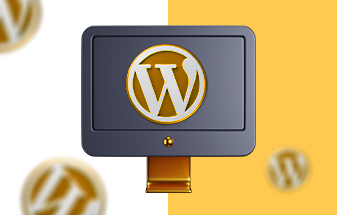
Small businesses often start their e-commerce journey by using a WordPress template on a hosted platform to create simple e-commerce and company websites. As they grow, they may, at some point decide they need to migrate to a new platform or migrate to an in-house infrastructure because they need increased resources. Alternatively, an organization hosting a simple website may need to migrate to a WordPress-hosted site to set up e-commerce or improve its corporate image.
In both cases, there is a migration process, either to WordPress or WordPress.
Migrating to WordPress Hosting
How you go about this depends on whether or not you already use WordPress.
Migrate an Existing WordPress Site
Considerations
There are several options for proceeding:
- Ask your new host to do it for you.
- Use a WordPress Plugin
- Do it Yourself, manually
One critical point to note is that however you do it, if you are physically moving to a new website on a different server, then the DNS entry pointing to your website will need to be migrated to the IP address of the new website.
Service Provider Help
A website hosting provider, such as HostSailor, is experienced in setting up and operating WordPress websites. Ask them to carry out the migration for you. They may do it for free, or for a small fee. If you don’t want to do it yourself or have concerns about using a third-party plugin, then this is the way ahead.
WordPress Plugins
It is a no-brainer that you already take full offsite backups of your WordPress site to cover against a malware attack or issues at the hosting provider, for example, a loss of service. Having a full backup has added value in that, by using it, you can easily migrate your site to a new host.
You can use manual backups and restores, but that can be time-consuming, inefficient and expensive:
- You might need expensive professional contractors to carry out the work;
- You might have forgotten to take a backup, or the backups are corrupted and unusable; and
- You might not back up everything you need.
There are a lot of WordPress plugins, for example, Jetpack, that will automate the backup process. Using one will remove the need for manual intervention, though it is essential to periodically check that backups happen and are usable.
Thereafter, install a skeleton WP installation on the new host, install the backup/restore plugin and restore your site from backup. Again, it is essential to review the installation log, and confirm that it is operating correctly. If errors are noted in the log, or there are unexpected errors, then these need to be fixed, perhaps by rerunning the migration.
Another option is to use the All-in-one WP plugin from WordPress. This creates a bespoke migration file, which can be unpacked from the WP admin dashboard at the new site. There are some restrictions on the versions of WP and some components, but if you are up to date, these should not apply.
DIY Migration
This option needs some technical skills and could be a bit of a challenge. Potentially, it could also take more time than an automated migration.
The steps include:
If you are changing your domain, use your web hosting provider, such as HostSailor, to register your new domain.
- Backup and Export the Database.
You should already have been taking regular site backups, but just prior to migration take another full backup of absolutely everything. This is non-negotiable.
- Find phpMyadmin in Control Panel and click on Export. Choose a format, usually SQL.
- On the new website, again go to cPanel and go to Databases. Create a new SQL database.
- Go to phpMyadmin and navigate to the new database. Use the Import tab to load the old website export file to the new database. That loads your data.
- Upload your website WP file to the new host. Use a tool like FileZilla to log into the root folder of the new host server. Upload the old WP database to the new database in its entirety. That recreates your WP installation.
- Edit the WP configuration file. You need to change the name, user, and password links in the wp-config.php file to reflect the new database credentials.
- That’s it.
In general, we recommend that you use a migration tool, or ask your host to do it for you.
Migrating to Self-Hosting from WordPress
This in essence is the same process as using a migration tool or a DIY approach to migration.
In simple terms, a DIY approach is to:
- Export your data;
- Create a WP installation on your server, either from scratch or by copying the existing WP installation;
- Create a database;
- Import the exported data.
- Edit the WP configuration files to reflect the credentials of the new database.
- Migrate your Domain entry to reflect the IP address of your new website location.
A migration tool will do all of that for you.
If you need to move your WordPress site, please consider HostSailor as a host. We are experienced in WordPress installation and management, and in migrating to WordPress from other platforms. If you want to explore the options, or just have a chat, please don’t hesitate to contact us.

